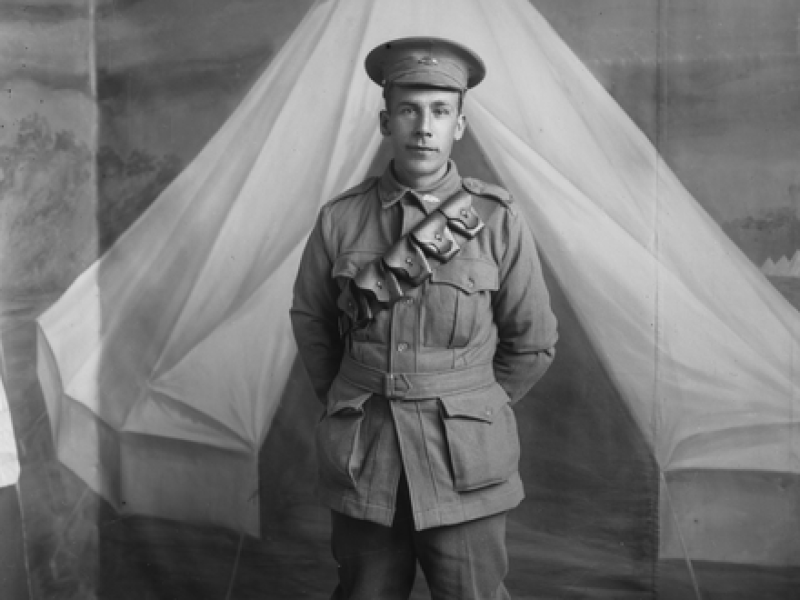Private Christopher Wilson Carter, 6th Battalion, AIF
Christopher Carter was born in 1887, the son of Marjorie and Christopher Wilson Carter of Greenwald, a small rural community in south-west Victoria.
His mother’s parents were thought to be an Englishman with the surname of Etchison, and a Gunditjmara woman who was brought up by Mrs Flora Robertson of Connewarren Station near Mortlake.
Young Christopher attended the local Greenwald Public School.
In May 1916, he enlisted in the Australian Imperial Force. He entered camp at Ballarat, then to Broadmeadows in Melbourne, where he trained until 11 September 1916, when he embarked on the troopship Euripides.
Carter joined the 6th Battalion in France towards the end of 1916.
Having fought at Pozieres in France and Ypres in Belgium in 1916, the battalion returned to the Somme in winter, undertaking defensive duties and patrols into no man's land.
In early 1917, German forces pulled back to the Hindenburg Line, a series of defensive positions built to strengthen German lines during the winters of 1916 and 1917.
After an initial assault at Bullecourt failed to penetrate the line, British commanders prepared for a second attempt. Artillery began an intense bombardment of the village, which by 20 April had been virtually destroyed.
An infantry assault was set for early morning 3rd of May. Elements of the 2nd Australian Division attacked east of the village, hoping to pierce the Hindenburg Line, while British troops attacked Bullecourt, which was finally taken and held. German resistance was fierce, and when the offensive was called off in mid-May, few of the initial objectives had been met.
On 9 May 1917, Christopher Carter was killed in action near Bullecourt. There was some initial confusion about the manner of his death but later reports indicated that Carter and another man were hit by a high explosive shell near a support trench at Bullecourt. The trench collapsed, but the men were dug out. Carter was described as having suffered from “serious head wounds” and was “fearfully crushed and knocked about”; he died just after he was freed. He was buried alongside the trench and his identity disc identified the grave.
Christopher Carter was 30 years old.
His gravesite was lost during later fighting, and today is commemorated at the Australian National Memorial at Villers-Bretonneux, which lists 10,773 names of soldiers of the AIF who have no known grave.
A memorial service was held in Carter’s hometown, with the Hamilton Spectator reporting:
One of the largest congregations that had ever been present at St Aldan Church, Greenwald, attend on Sunday to mark the respect in which the late Private Carter who was recently reported killed in action, somewhere in France, was held, and at the same time to indicate their deep sympathy for the bereaved parents and family. The church was draped in purple and white, together with the British Flags and autumn flowers.
Christopher Carter’s name is listed on the Australian War Memorial’s Roll of Honour and the Greenwald Avenue of Honour.
Duncan Beard, Military History Section, Australian War Memorial

 Australian War Memorial
Australian War Memorial